After the liberation of Buda and Pest from the Turks in 1686, the Buda Chamber Inspectorate began settling in Pest. The ownership of the new settlers was confirmed in a land purchase protocol, and the condition of the ruins in the allotted houses could be read on the land letters issued. Based on the surviving land letters and the Zaiger (indicator) created to clarify land relations and systematize tax matters, it can be seen that today's Váci Street was literally in ruins. The settlers got access to the plots either for free or, if there were building remains on them, for 20-30 forints. They were also given a five-year tax exemption, but at the same time they had to undertake to build a house on the site.
The history of the area of today's corner building at 32 Váci Street - 2 Kígyó Street is very diverse. After Turkish times, a large, well-located plot of land with a ruined building stood here. This area was claimed by the pharmacist Heinrich Siegfried Herold in 1686, who probably came from German lands as a settler after the Turkish conquest. According to written sources, the settlement of Heinrich Siegfried Herold was welcomed by the city of Pest, he was granted the right to a pharmacy and soon became a member of the city council. He was free to choose a plot in Váci Street to build his pharmacy. Herold marked the founding of the pharmacy in 1686, the year of the application, but we know that the pharmacy was not completed until two years later, in 1688.
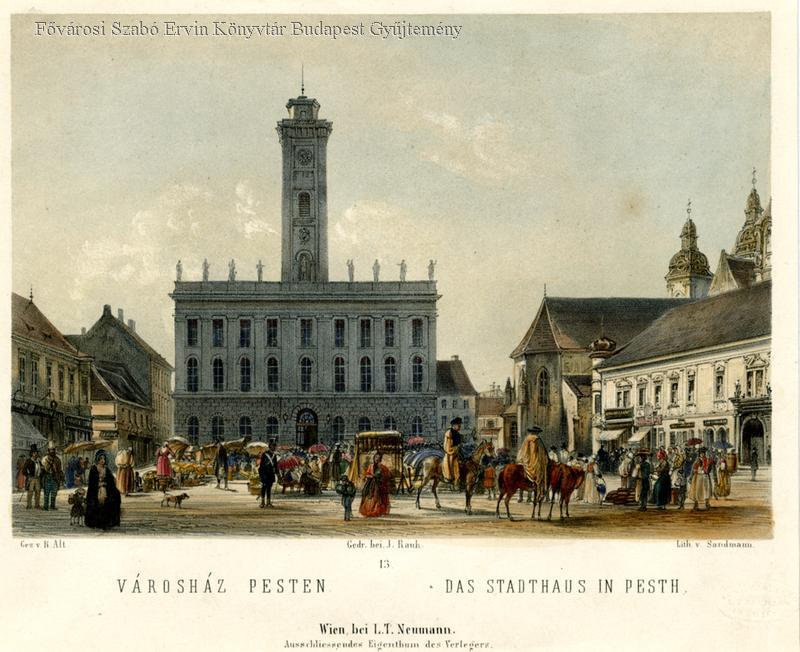
The square was called Fő [Main] Square and then the Városház [Town Hall] Square. Opposite the old Pest City Hall building, on the left corner is the area of today's Váci Street 32 with the house in place. The picture was taken in 1853 (source: Rudolf Alt / FSZEK Budapest Collection)
Herold erected a one-story, three-room baroque house as well as a pharmacy addressed to the Holy Trinity with the restoration of the ruins there. István Czagány's work entitled Magyarország barokk patikái [Baroque Pharmacies in Hungary] also highlights that it was the first public pharmacy in Pest (There were pharmacies in Buda and Óbuda much earlier).
The area is a highly protected archaeological site. When the archaeologists of the Budapest History Museum (BTM) dug in the courtyard of the house at 32 Váci Street in 2018, they found traces of the restoration after the destruction of the Turkish era: we know from their research that Herold decorated the building with frescoes. (The excavated remains have been exhibited in the BTM Castle Museum between October 2018 and January 2019.)
Heinrich Siegfried Herold was also a judge in Pest between 1689 and 1692, but was involved in a murder case and was later deprived of his post. Until his death, in 1705, he operated a pharmacy here, which his widow sold together with the house on 22 September 1705 to Sámuel Eyssrich (Eüsserich), owner of the Golden Anchor Pub at 28 Váci Street, for 2,000 forints.
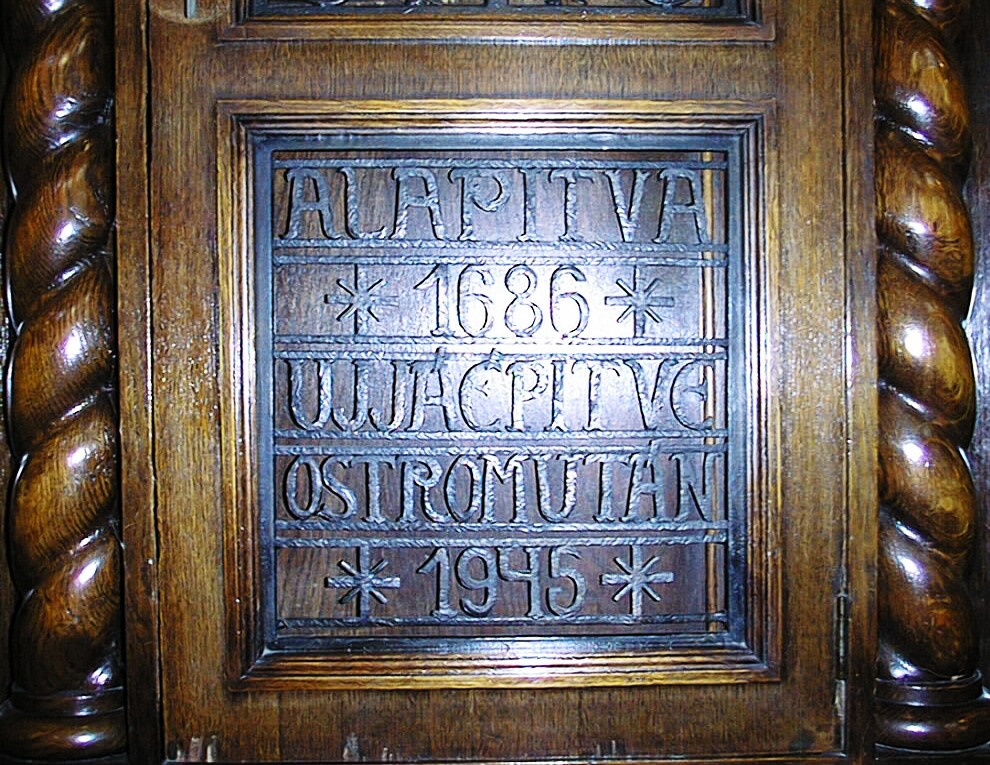
The legal successor of the former Szentlélek pharmacy later operated at 34 Váci Street (source: gyogyszeresztortenet.hu)
Eyssrich kept the house, and the pharmacy was passed on to pharmacist Zakariás Keresztély Osterwald in 1705. Earlier, in 1701, Osterwald opened the Osterwald pharmacy at 34 Váci Street (today the northern block of the Kotild Palace stands there), in the immediate vicinity of the pharmacy addressed to the Holy Trinity. After buying Herold's pharmacy on 2 October 1705, he merged the two pharmacies, which continued to operate at 32 Váci Street.
The Herold plot with the two houses on it was sold by the widow in 1733, after Osterwald's death, and the plot was divided into plots at 30 and 32 Váci Street. At 30 Váci Street a one-storey house was built by József Hild on the order of József Schaffer,(here is Haris alley, with houses built by Károly Rainer on the two sides of the former Haris bazaar). According to István Czagány, "the pharmacy moved from one house to another after 1705, but it never left the then Városház Square.""For example in 1832 it was at 30 Váci Street, operated by József Müller pharmacy owner. On 28 April 1833, the magazine Honművész wrote:
"Mr. Müller's pharmacy addressed to the Holy Trinity deserves an inspection… at the Városház market in Schaffer's house, to which this institution moved from its old place only last year."
Later, the same pharmacy operated at the aforementioned number 34 in the Klotild Palace (in the northern one) built by Flóris Korb and Kálmán Giergl between 1899 and 1901, where the legal successor of the pharmacy, the No. 505 city pharmacy operated from 1945 until the change of regime.
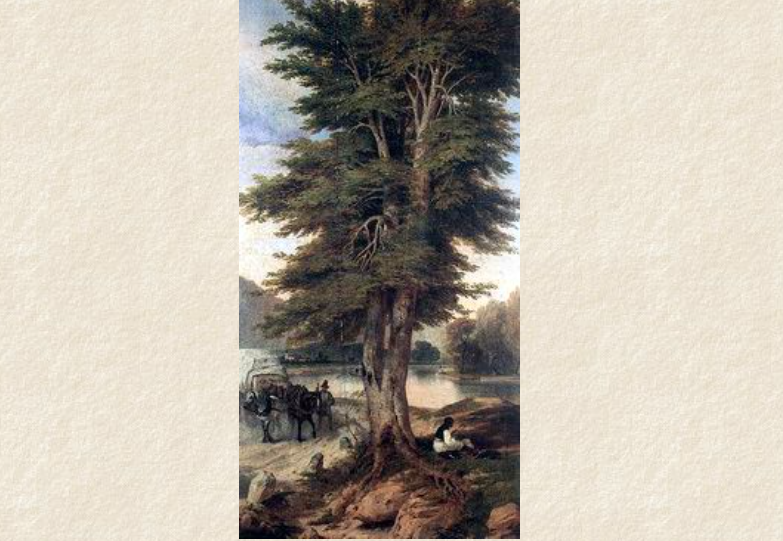
The sign of the Green tree fabric store was painted by Miklós Barabás in 1838
Returning to the original building, the owner from 1794 was János Házy. We know from László Tarr's book A régi Váci utca regényes krónikája [The Novel Chronicle of Old Váci Street] that at that time the Lenz and Co.'s shop addressed to the "Prince of Wüttemberg" or the shop of the cloth merchant György Temesváry addressed to the White Pigeon operated in a room rented in the Házy-house.
After János Házy died in 1833, the new owner, András Gamperl, a silk merchant ordered Ferenc Kasserik (one of his best-known works is the National Music Hall in Semmelweis Street or the building of the old town hall rebuilt by József Hild) to build a floor on top of the house. Ferenc Schedel (Ferenc Toldy from 1847), a doctor of ophthalmology, secretary of the Hungarian Society of Scientists, later an aesthetic and literary historian lived upstairs, but also other high-ranking residents lived here, such as József Lónyay, Member of Parliament, János Lónyay, member of parliament, deputy of Bereg, Arisztid Dessewffy, Major General of the Hungarian Defence Forces, one of the martyrs of Arad.
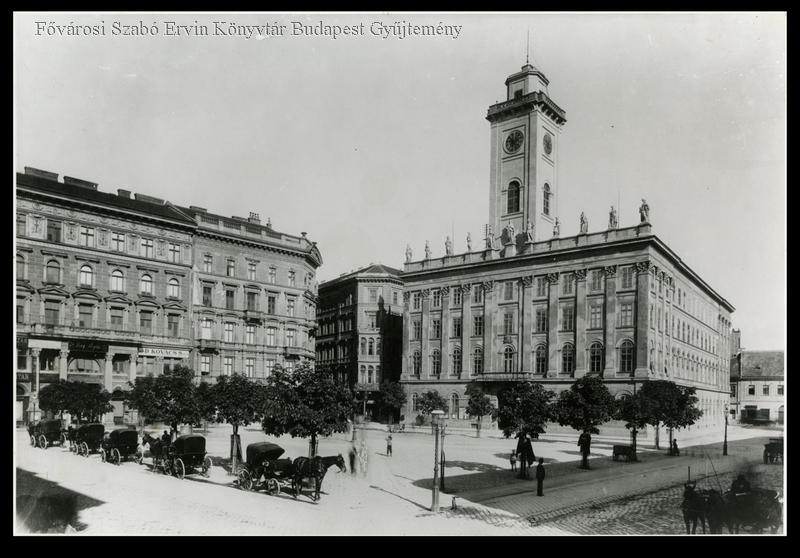
With the building of the old Town Hall of Pest and the waiting rental cars around 1890, on the left, on the corner at 32 Váci Street, the house was designed by József Diescher (photo: György Klösz / FSZEK Budapest Collection)
From 1834, József Nagy's fabric store adressed to the Green Tree operated here. József Szekrényessy, a writer and lawyer, a colleague of István Széchenyi, praised the store in a long article in the magazine Honművész. As he wrote:
“Without any magnification, it is currently rightly called the most beautiful shop in Pest (and the whole of Hungary). Its sign, which is picturesque just around the corner, is a beautiful green tree taken from the Buda landscape, where the tomb of Chief General Alvinczy is embossed ”.
The sign was painted by Miklós Barabás. In the list of his pictures under number 446 it reads: "To József Nagy, a landscape" Green Tree "cfl (conventional forint) 100." Szekrényessy also mentioned the owner of the store in his article. "The young humble beginner (Mr. József Nagy, a landowner of Győr county) gave a certain new life and vitality to the market of the whole city through this beautiful shop." What really impressed the author was that both the name and address of the store were in Hungarian (the other stores, even if they had Hungarian inscriptions, placed it only under the German one).
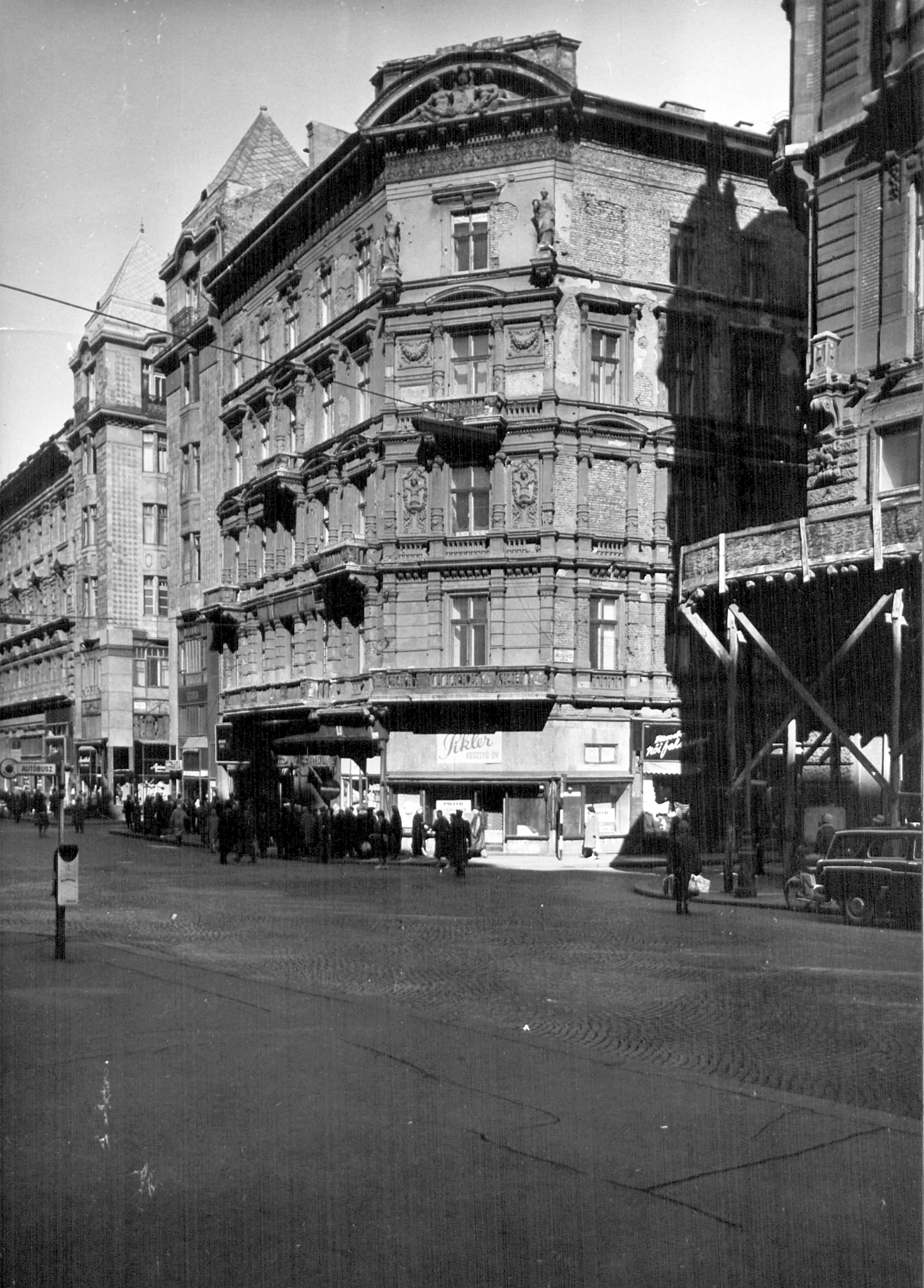
The building was built in 1968 (source: Fortepan / Budapest Archives. Reference No.: HU_BFL_XV_19_c)
József Nagy closed the store in 1844. The house at 32 Váci Street was bought by Károly Várady, who built the historicist house still standing there with József Diescher (his best-known work is the Palm House of Eötvös Loránd University) in 1872. In the Várady House there was a storehouse of linen and lingerie of the Adam and Eberling company addressed to the Prophet. After the company went bankrupt in 1893 and closed its shops, József Kollarits and sons rented a shop here for a short time, and the successor of Frigyes Kilián, the book sales company of Tivadar Noseda, moved into the building.
.png)
The company József Kollarits and sons moved to the Várady House, then at 8 Városház Square in 1893 (source: Vasárnapi Ujság, 1 October 1893).
During the nationalization, the book trade was liquidated, and then the Foreign Language Bookstore operated here until the change of regime. In the eighties, reports had already reported that the house was in a dilapidated condition, and it has not been repaired since. Commercial and entertainment venues operate here, today there is also an exchange office on the ground floor, but the upstairs spaces in the house are in very poor condition, as shown by the boarded-up windows. We know from the foundational study of Inner City - Lipótváros in 2017 that the house, which is under individual protection in the district, will be turned into a hotel.
Cover photo: With the building of the old Town Hall and the waiting rental cars around 1890, on the left side of the corner building is the house at 32 Váci Street (György Klösz / FSZEK Budapest Collection)

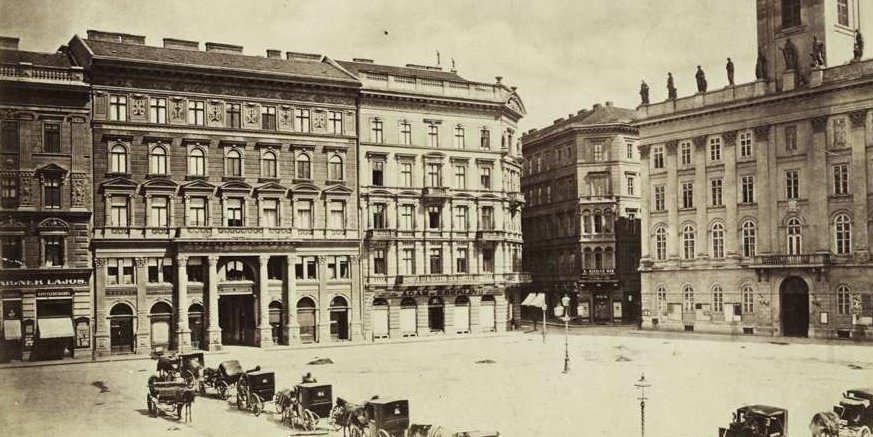


































Hozzászólások
Log in or register to comment!
Login Registration